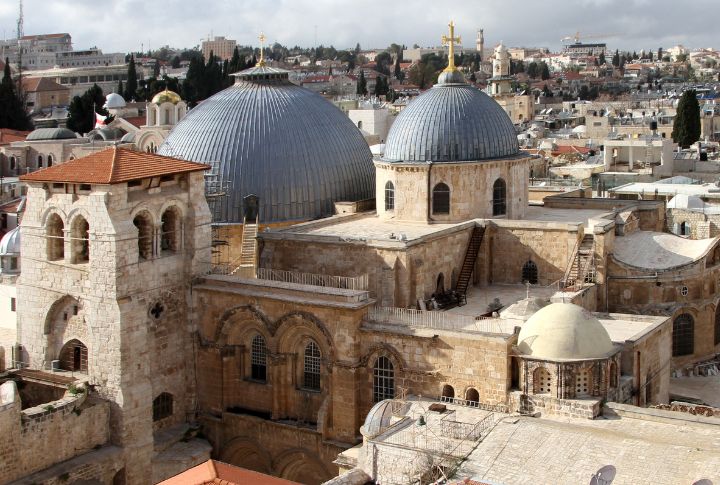
History has a way of surprising us when we least expect it. In one of Christianity’s holiest sites, an astonishing find has brought the past vividly back to life. What was once thought lost forever—a medieval altar from the Crusades—has reemerged in the Church of the Holy Sepulchre, hidden in plain sight for centuries.
The Hidden Cave Within the Shrine

For centuries, the Edicule, an ornate shrine, has encased what many believe to be the cave where Jesus was entombed and resurrected. This structure surrounding the original cave withstood centuries of damage, including a 1927 earthquake that caused a partial collapse and required more restorations.
Signs of Decay
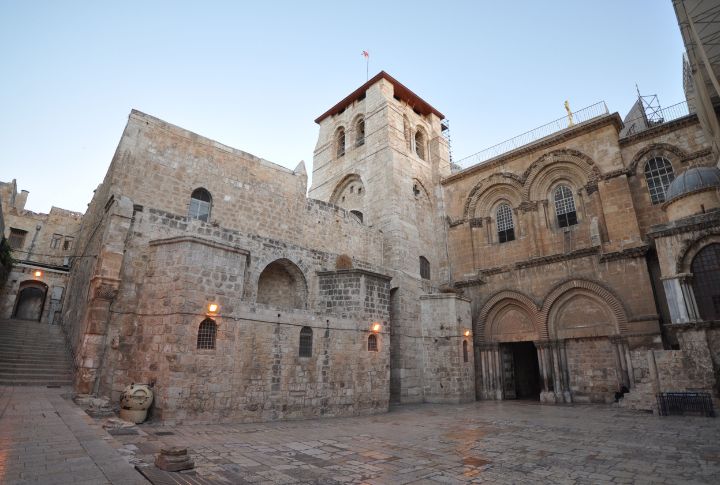
The shrine’s stone walls had started buckling, and the entire structure was deteriorating due to water damage, humidity, and candle smoke. Recognizing the urgency, a restoration team from Athens took on the monumental task of dismantling parts of the Edicule and carefully reconstructing them to prevent a potential collapse.
Likely Burial Site of Jesus

In 2016, a conservation team revealed a limestone slab within what’s believed to be Jesus’s tomb, which had been concealed under marble since 1555. Although evidence remains inconclusive, scholars suggest this site carries the most substantial claim as the location of Christ’s burial and resurrection.
Revealing a Lost Relic
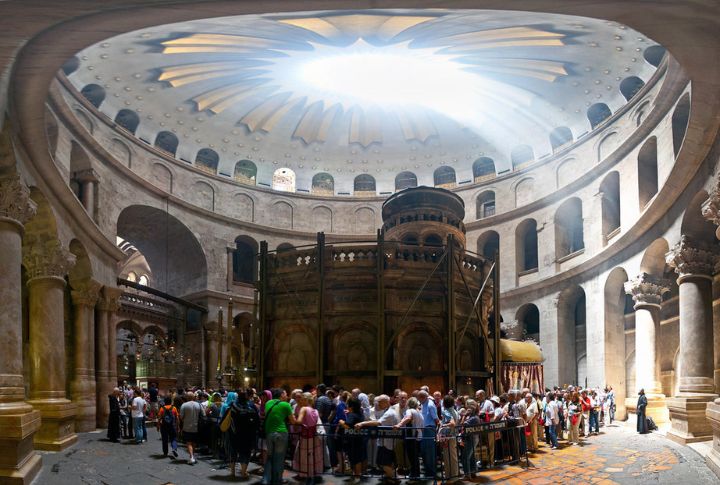
During these necessary renovations, what was believed to be lost in the 1808 fire was unexpectedly revealed. The restoration efforts saved the shrine from collapse and rediscovered an ancient relic, which added a new chapter to the Church of the Holy Sepulchre’s history.
Stunning Discovery in a Sacred Place

A long-lost, age-old altar resurfaced in Jerusalem’s Church of the Holy Sepulchre. This graffiti-covered relic remained obscured and unnoticed for centuries within a public corridor. When the massive stone slab was overturned, it revealed intricate decorations, identifying it as a medieval altar of great significance.
A 12th-Century Relic With a Rich Heritage

This altar, dating back to the 12th century, was a focal point in the revered church after the Crusaders conquered Jerusalem in 1099. Consecrated in 1149, it mysteriously vanished following a devastating fire in 1808, with its fate unknown until now.
Cosmatesque Artistry on Display

Adorned with intricate Cosmatesque designs, the altar shows a unique art style named after the Cosmati family of Rome. Known for passing down their stoneworking skills through generations, the Cosmati family perfected the craft of creating geometric patterns from recycled marble—a status symbol in the Middle Ages.
Recycling the Past
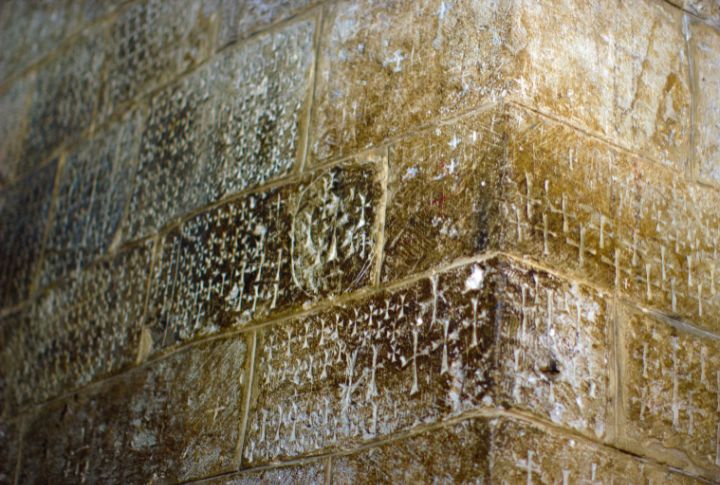
Cosmatesque art isn’t just beautiful; it’s resourceful. The style combines small, recycled marble fragments from ancient structures to form complex geometric patterns. This sustainable approach to art was more than a decoration—it was a statement of power and faith, often linked to papal Rome.
A Papal Tribute to Jerusalem

Researchers believe the altar was created with the Pope’s blessing to honor the Church of the Holy Sepulchre and support Christianity’s claim to Jerusalem. The hallowed artifact, measuring over 11 feet long, reflects the site’s value and the Crusaders’ efforts to solidify their presence in the Holy Land.
A Stone Slab With a Story
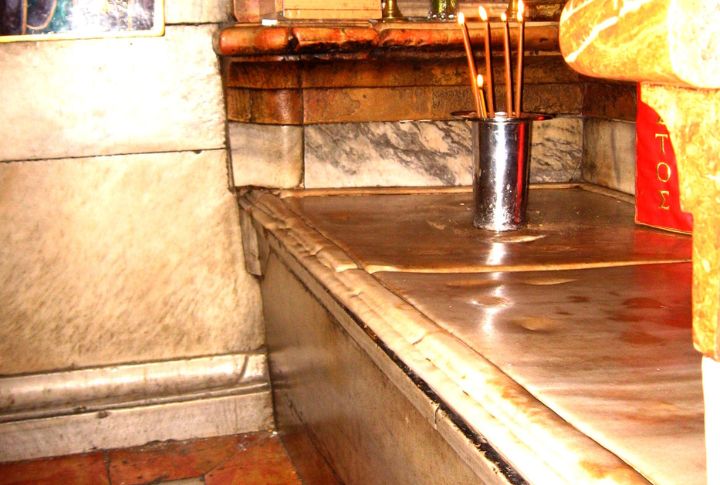
Before its true identity was revealed, the altar was mistaken for an ordinary stone slab. Over time, visitors left their marks on it and covered the stone in graffiti. These modern scribbles introduce an unexpected chapter to this ancient artifact’s story, seamlessly blending the old with the new.
A Monumental Medieval Altar
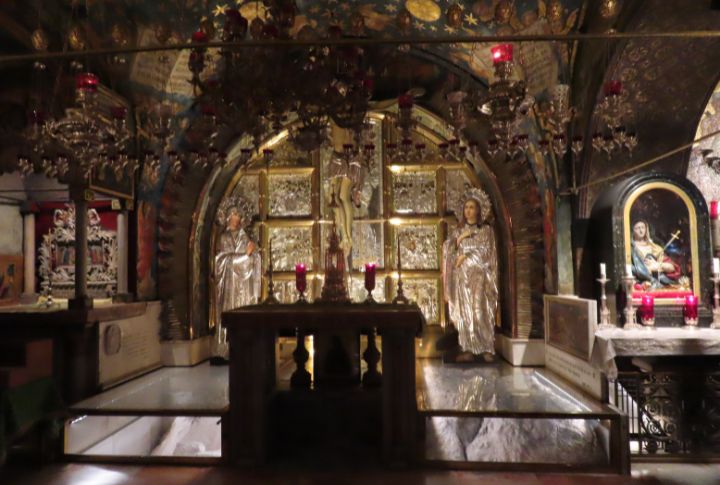
At over 11 feet long, this altar is the largest known altar of the Middle Ages discovered to date. Its size and grandeur reflect the Church of the Holy Sepulchre’s importance in medieval Christianity and the tremendous effort that went into its creation. This monumental find is genuinely one of a kind.
The Crusaders’ Legacy in Jerusalem
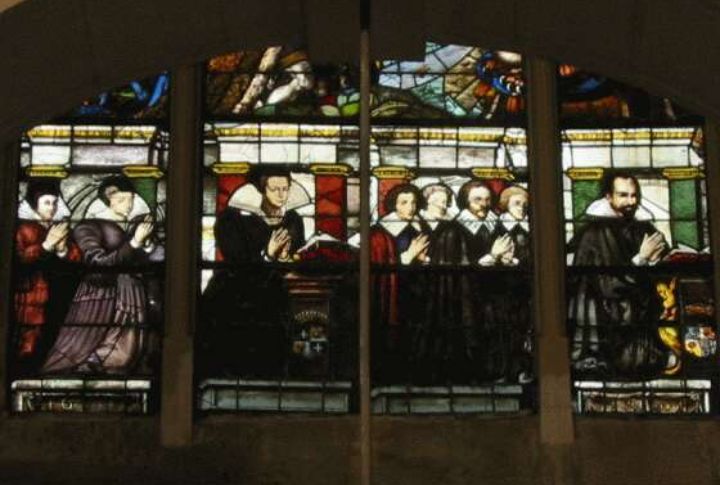
The altar is a tangible link to the Crusaders’ influence in Jerusalem. It’s a powerful reminder of the city’s complex legacy, where different cultures and religions have left their marks over the eras and added intricate layers to a rich heritage.
Pilgrim Accounts and Historical Significance
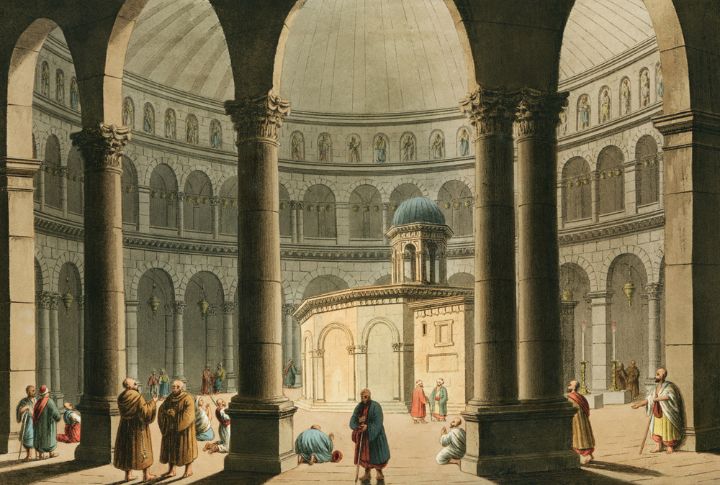
Pilgrims from the 16th, 17th, and 18th centuries wrote about a magnificent marble altar in Jerusalem, believed to be the one now rediscovered. Their accounts add historical relevance to this find, connecting modern-day finds with eons of religious devotion.
Cosmatesque Art Beyond Jerusalem
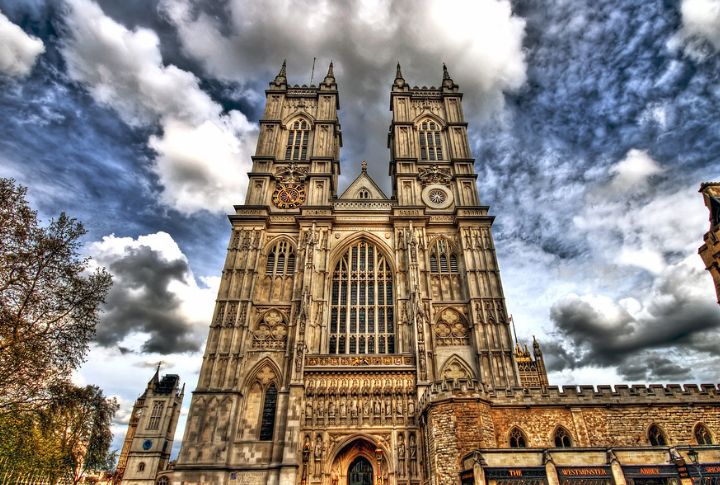
The only other piece of Cosmatesque art outside Italy is in Westminster Abbey. Researchers believe the Cosmatesque altar in Jerusalem was created with the Pope’s blessing to support Christianity’s claim to the city by commissioning a master to craft it in the faith’s holiest church.
Ongoing Mysteries of the Holy Sepulchre

With this revelation, the Church of the Holy Sepulchre continues to reveal its secrets. This holy site still surprises historians even after years of study, which reminds us that history is never entirely written and that more treasures may still be uncovered in the most unexpected places.

